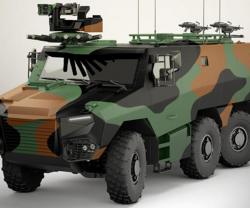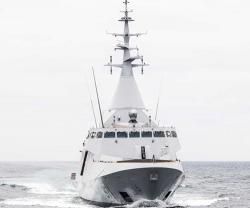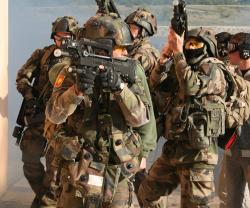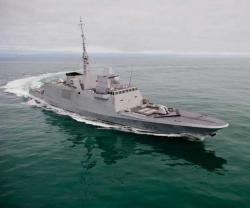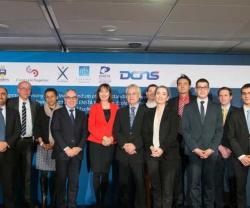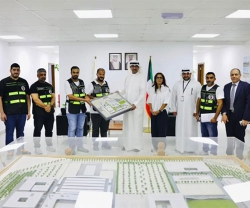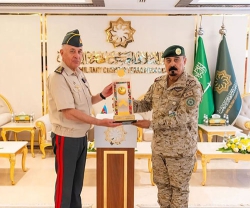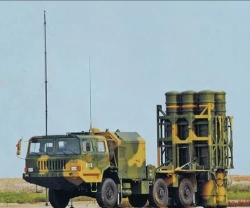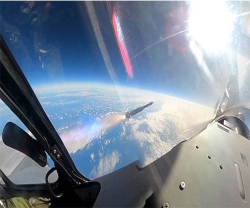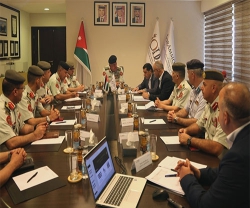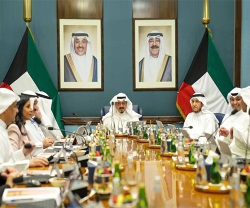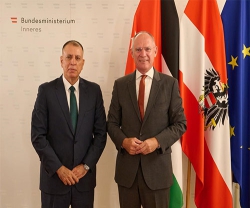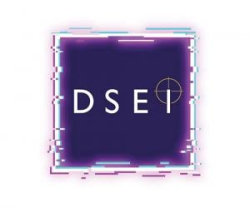BPC Dixmude Ready for Combat System Integration
15.07.2011 Security
BPC Dixmude - the third Mistral/BPC-type force projection & command vessel for the French Navy - arrived in Toulon earlier this week after sailing from Saint-Nazaire on 6 July.
Over the coming six months, DCNS will settle the combat system which includes the communications, navigation and combat management systems. Successful integration hinges on value-adding expertise every step of the way. The work will be performed by teams of experts from DCNS and its partners. These are vital to operational missions and represent around one-quarter of the ship’s total value.
The DGA ordered BPC Dixmude in April 2009 as part of an economic stimulus package proposed by French President Nicolas Sarkozy. The resulting industrial cooperation program was awarded to DCNS and STX France and the platform built at the STX France shipyard in Saint-Nazaire in cooperation with DCNS.
BPC Dixmude is scheduled for delivery to the DGA in early 2012 and for entry into active service later in the year.
BPC Mistral and BPC Tonnerre, the first two Mistral-class force projection & command vessels, were built by DCNS and the then - Chantiers de l’Atlantique and delivered to the Navy in 2006 and 2007 respectively.
On 17 June, DCNS signed a contract with Russian defence export agency Rosoboronexport for the supply of 2 Mistral/BPC-type vessels and associated services including initial logistics, training, and technology transfers. This is the first export success for the Mistral/BPC design. On the international market, the type is known as a landing helicopter dock or LHD. The first ship will be delivered to Russia in 2014, just three years after the contract go-ahead. The second will be delivered in 2015.
With a length of 199 metres, a displacement of 21,500 tonnes and a speed of 19 knots, BPCs offer a global projection capability for troops and materiel including 450 troops and 16 heavy helicopters plus one of several options: two hovercraft, two new-generation EDA-R high-speed landing craft, four LCM-type landing craft or one-third of a mechanised regiment complete with armoured vehicles (representing a payload of 1,000 tonnes). BPCs also offer ample capacity as hospital ships or for large-scale humanitarian missions. The design features electric propulsion using azimuth pods and high-level automation compatible with a complement of just 170. A high-performance communications suite, a 3D surveillance radar and a Senit 9 combat management system (CMS) make the type ideal as a naval force command vessel.
Over the coming six months, DCNS will settle the combat system which includes the communications, navigation and combat management systems. Successful integration hinges on value-adding expertise every step of the way. The work will be performed by teams of experts from DCNS and its partners. These are vital to operational missions and represent around one-quarter of the ship’s total value.
The DGA ordered BPC Dixmude in April 2009 as part of an economic stimulus package proposed by French President Nicolas Sarkozy. The resulting industrial cooperation program was awarded to DCNS and STX France and the platform built at the STX France shipyard in Saint-Nazaire in cooperation with DCNS.
BPC Dixmude is scheduled for delivery to the DGA in early 2012 and for entry into active service later in the year.
BPC Mistral and BPC Tonnerre, the first two Mistral-class force projection & command vessels, were built by DCNS and the then - Chantiers de l’Atlantique and delivered to the Navy in 2006 and 2007 respectively.
On 17 June, DCNS signed a contract with Russian defence export agency Rosoboronexport for the supply of 2 Mistral/BPC-type vessels and associated services including initial logistics, training, and technology transfers. This is the first export success for the Mistral/BPC design. On the international market, the type is known as a landing helicopter dock or LHD. The first ship will be delivered to Russia in 2014, just three years after the contract go-ahead. The second will be delivered in 2015.
With a length of 199 metres, a displacement of 21,500 tonnes and a speed of 19 knots, BPCs offer a global projection capability for troops and materiel including 450 troops and 16 heavy helicopters plus one of several options: two hovercraft, two new-generation EDA-R high-speed landing craft, four LCM-type landing craft or one-third of a mechanised regiment complete with armoured vehicles (representing a payload of 1,000 tonnes). BPCs also offer ample capacity as hospital ships or for large-scale humanitarian missions. The design features electric propulsion using azimuth pods and high-level automation compatible with a complement of just 170. A high-performance communications suite, a 3D surveillance radar and a Senit 9 combat management system (CMS) make the type ideal as a naval force command vessel.
Previous PostSaudi Arabia Cheers Bahrain Dialogue, South Sudan
Latest news
Latest events
DefenPol China2025 - 7th Guangzhou International Defense & Police Exhibition & Summit
11 - 12 Jul 2025Nan Fung International Convention & Exhibition Center (NICEC) - ChinaIDEF 2025 Turkey - International Defence Industry Fair
22 - 27 Jul 2025Istanbul Expo Center - TurkeyDSEI 2025
09 - 12 Sep 2025Excel, London - United KingdomIntersec Saudi Arabia
29 Sep - 01 Oct 2025Riyadh International Exhibition & Convention Centre - Saudi Arabia



